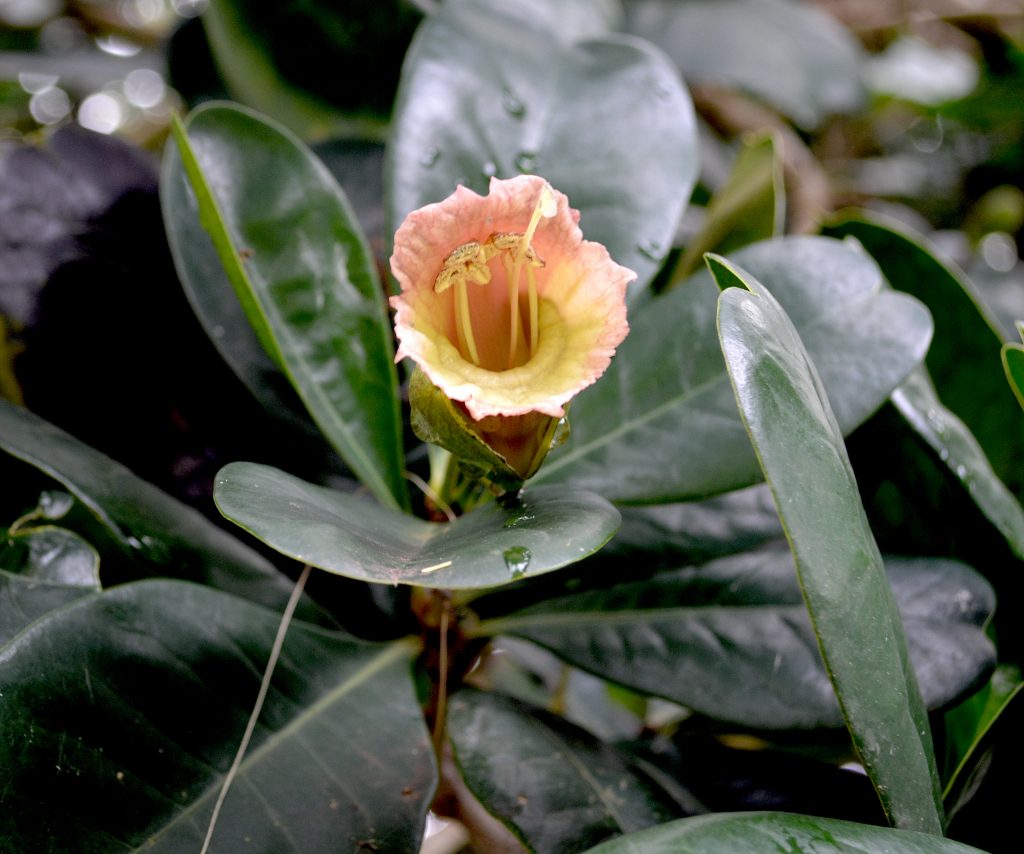
The blossom of the Black Calabash. Photo by Green Deane
It started with spotting a blossom while teaching a foraging class. There are so many edible plants that one is constantly learning. You can walk past one dozens of times before you notice it for some reason such as fruiting for the first time in your presence or in this case blossoming.
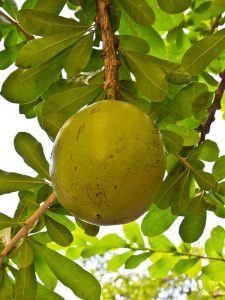
Fruit of the Black Calabash Tree
The location was a park that was designed and crafted close to a century ago by one county employee without a plant budget. So species were begged, scrounged and rescued from trash heaps from all over the place. One never knows what one will find in 100-acre Dreher Park though I doubt anything poisonous was intentionally planted there.
A student asked what was the tree as it was blossoming. It was a large, dark-leafed tree with distinctive flowers. I had walked past that tree couple of dozen times over the last 14 years or so. I admitted I did not know. After a few fits and starts Black Calabash seems right, Amphitecna latifolia (and if so it might be the most northern one identified in the state as there is a stand of them some seven miles south on the north end of Lake Worth. )
Reports vary on edibility. Most agree the black seeds are edible. One book, A Field Guide to Plants of Costa Rica, says the spongy white pulp is edible but does not mention the seeds which makes me cautious (in that the authors might confuse edible seeds for edible pulp.) Other reports say the tree does not fruit often unless the blossoms are intentionally pollenated. We do know the skin was dried and used like cups.
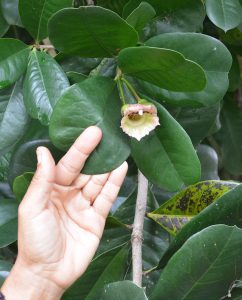
The blossoms get pollenated by chance.
Why doesn’t the tree fruit more often?Apparently it is pollenated by nectariferous bats of which there are none locally so birds do it accidentally. (I’m going to take some cotton swabs with me from now on and stimulate some blossoms.) Whether the tree is native or not is a botanical debate. Some think it is a critically imperiled native and others think it’s an exotic thankfully about to die off… and here you thought botany was mild-mannered and sedate.
Amphitecna (am-fee-TEK-naw) is from two Greek words, Amphi (all-around, on both sides) and teknos which is “craft” or “skill.” Perhaps it takes a knack to open the fruit. Latifolia (lat-ih-FOLE-ee-uh) in present-day botany means broad leaves. In Greek it means “star hairs.” No, I can’t explain the difference. I blame drunk botanists.
Green Deane’s Itemized Plant Profile
IDENTIFICATION: Upright, densely-foliated, evergreen tree to 30 feet, dark-green, glossy leaves to seven-inches long, two-inch long, purplish-white tubular flowers followed by shiny green, four-inch long fruit with a thin hard shell.
TIME OF YEAR: Continuous.
ENVIRONMENT: High hammocks, well-drained, good soil. Full sun, little shade. It will grow on shell mounds. Not salt-tolerant and subject to wind damage. Blow over easily.
METHOD OF PREPARATION: Seeds are edible. Opinions vary on the edibility of the pulp. The University of Florida states the fruit is “suited for human consumption.”
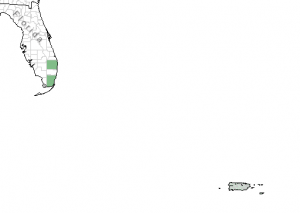
Distribution of the Black Calabash, south Florida to the Virgin Islands.

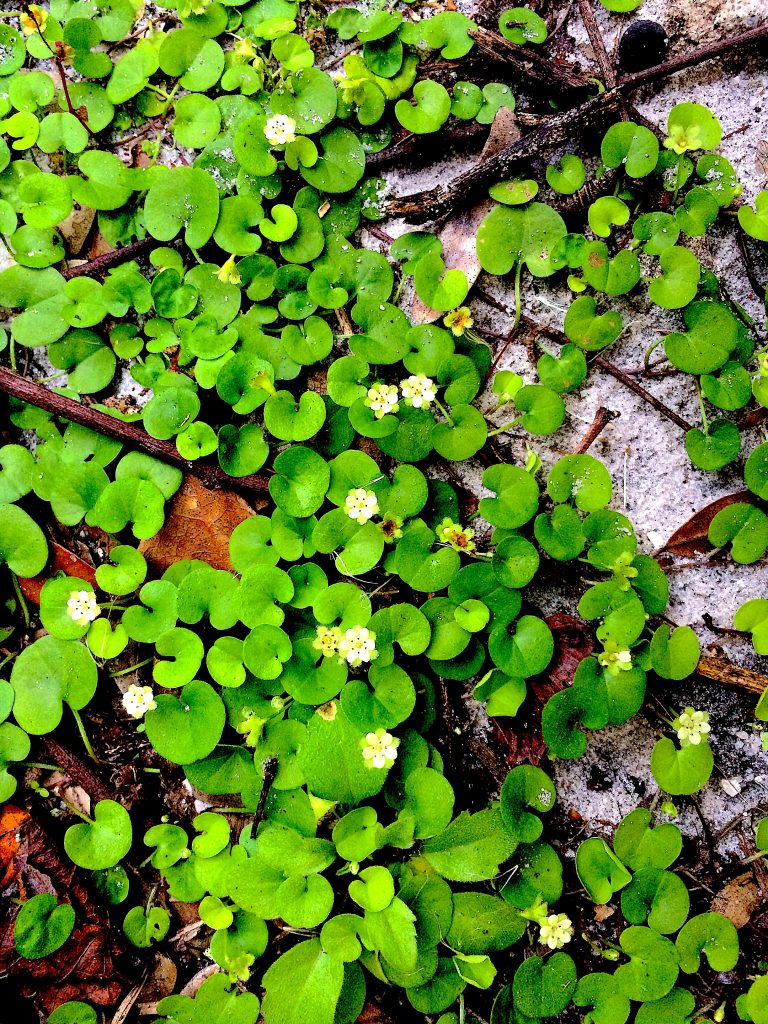
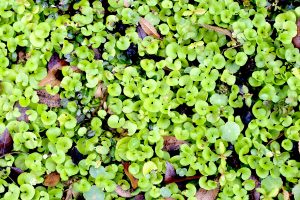
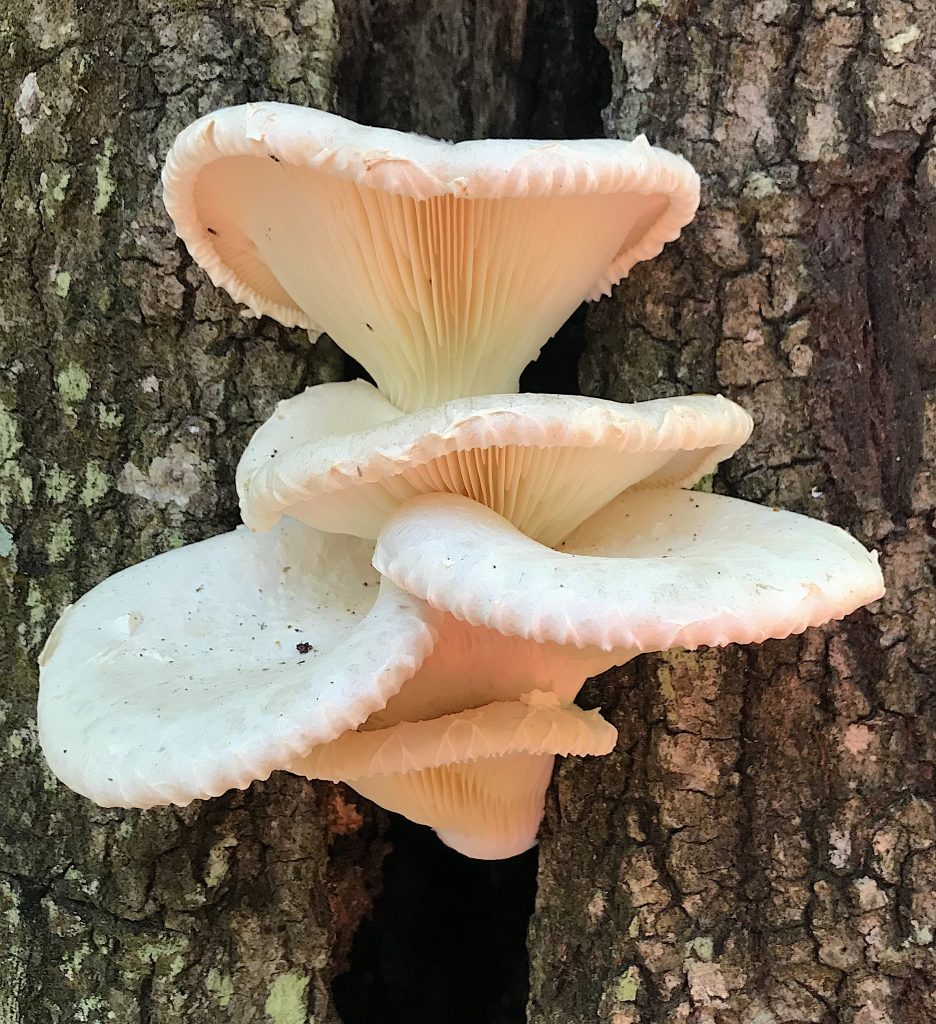
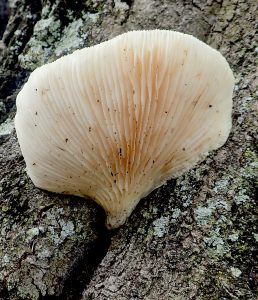
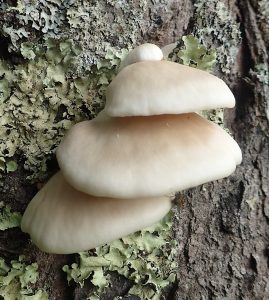
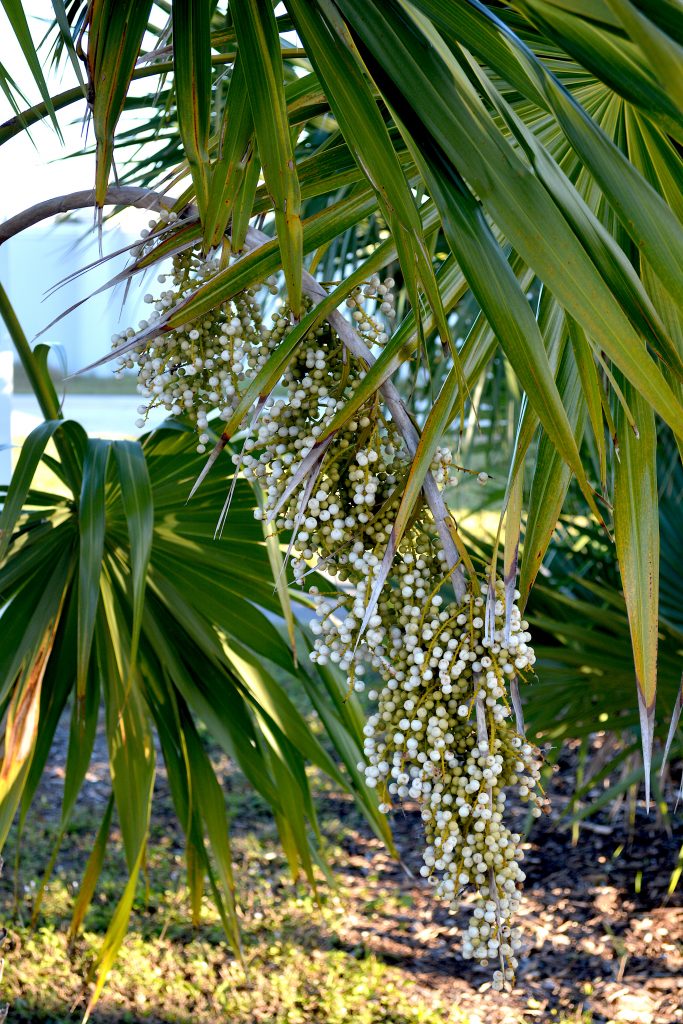
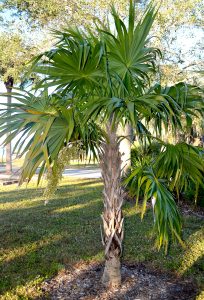
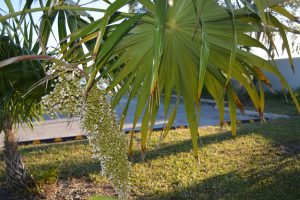

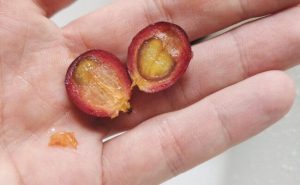
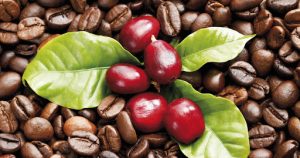
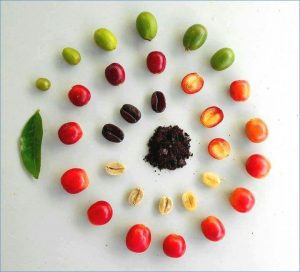 IDENTIFICATION: A shrub or small tree to 30-some feet. Open branches, well-spaced. Leaves are opposite, simple elliptic-ovate to oblong, four inches long,
IDENTIFICATION: A shrub or small tree to 30-some feet. Open branches, well-spaced. Leaves are opposite, simple elliptic-ovate to oblong, four inches long,